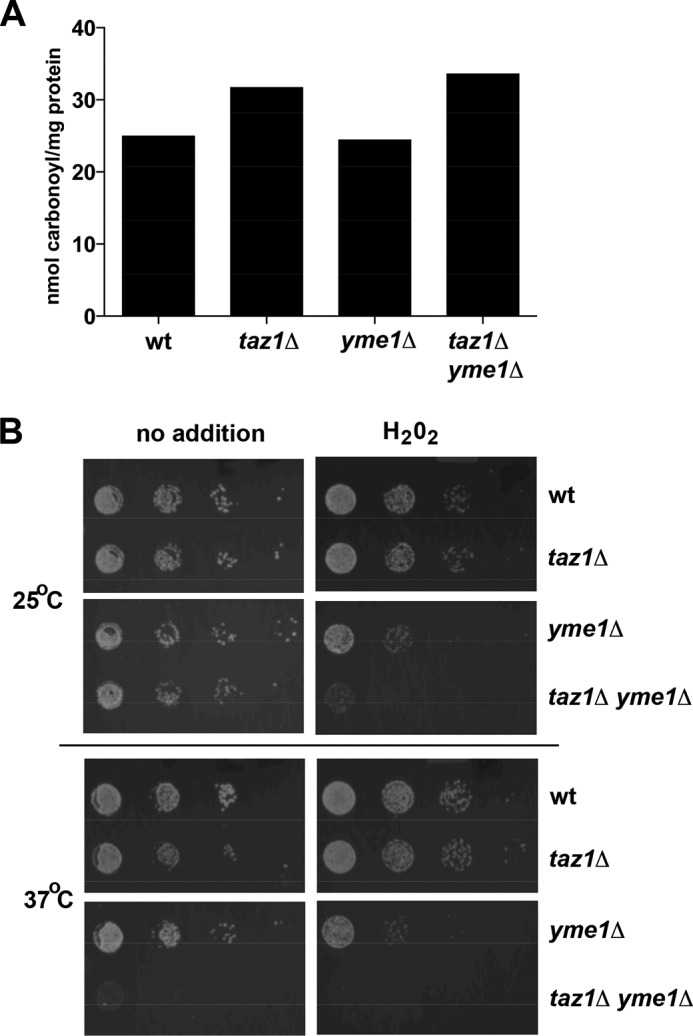FIGURE 8.

The taz1Δ yme1Δ yeast strain is sensitive to H2O2. A, oxidative stress causes the introduction of carbonyl groups to side chains of amino acid residues in proteins. Protein carbonylation was measured by the spectrophotometric estimation of protein-bound 2,4-dinitrophenylhydrazone (DNP) formed by the conversion of 2,4-dinitrophenylhydrazine to 2,4-dinitrophenylhydrazone by protein carbonyl groups. Yeast cells were grown to 0.9–1.0 A600 in YPL medium, and after that, proteins were extracted and estimated for carbonyl content using the protein carbonyl content assay kit (BioVision). The carbonyl content was then normalized to the amount of protein in each sample and expressed as nmol of carbonyl/mg of protein. The protein content in all of the samples was measured by the Bradford protein assay using the BCA assay kit (BioVision). Results are from three separate experiments, each with a S.E. of less than 5% of the mean. B, yeast strains were grown to early stationary phase (0.9–1.0 A600) in SC medium and then resuspended in the same medium to 0.45 A600, serially diluted (1:10), and spotted on YPL medium with or without 2.5 mm H2O2 and grown for 3–5 days at 25 or 37 °C. The presence of 2.5 mm H2O2 in the growth medium affects the growth of yme1Δ and taz1Δ yme1Δ cells; however, the growth defect is more pronounced in yeast lacking both TAZ1 and YME1.
